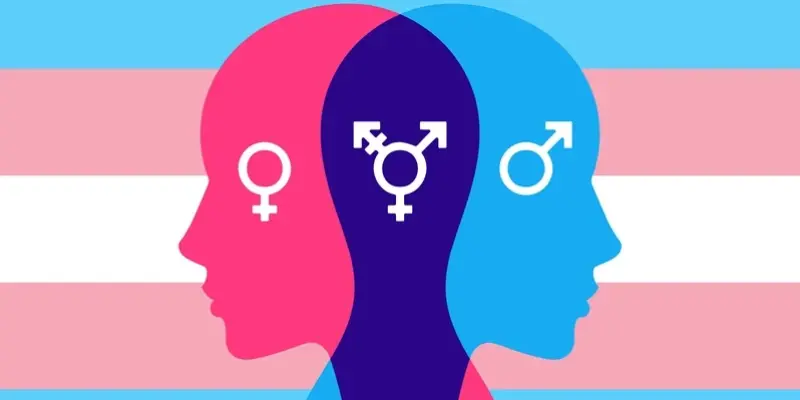Imagine stepping into a workplace where expressing one’s gender identity could cost more than just peace of mind—it could jeopardize one’s job itself. This is the reality faced by numerous transgender individuals nationwide, particularly following the recent decisions by the Equal Employment Opportunity Commission (EEOC) to drop several high-profile discrimination cases aligning with a federal policy that firmly recognizes only male and female sexes.
The EEOC’s recent alignment with the Trump administration’s binary sex order has sent ripples through the realm of workplace rights for transgender and gender non-conforming individuals. This move raises significant questions about the future of anti-discrimination protections, impacting countless employees who may feel unsupported and marginalized in their professional environments.
A New Direction for Workplace Discrimination Cases
The federal policy shift marks a significant turn in how workplace discrimination cases are approached. By dropping cases involving transgender rights, the EEOC appears to be stepping back from its commitment to protect individuals from gender identity discrimination. This departure has profound implications for transgender employees who may find themselves without recourse in the face of workplace discrimination.
One such case involved a transgender employee in Alabama, fired after disclosing their gender identity. In another instance, a New York housekeeper faced continuous misgendering by a supervisor. These stories exemplify the real, human impact of the policy shift, which some argue is a step backward in the fight for transgender rights.
The Importance of Gender Identity in Anti-Discrimination Laws
Recognizing gender identity is not merely a matter of political debate; it holds substantial significance for the individuals concerned. Anti-discrimination laws that incorporate gender identity provide crucial protections, ensuring that transgender employees receive fair treatment in workplaces traditionally dominated by binary concepts of gender.
These laws bridge the gap between support and discrimination, making a tangible difference in the lives of those they protect. Without recognition and protection under the law, transgender individuals may face heightened levels of discrimination and harassment, affecting their mental health, job security, and overall well-being.
Case by Case: Understanding the Impact
The EEOC’s decision to drop specific cases exemplifies the broader impact of the policy shift. The case of the Alabama employee, who was fired after disclosing their gender identity, shines a light on the vulnerability faced by transgender workers. In New York, a housekeeper’s case involved misgendering by a supervisor, highlighting the pervasive nature of workplace harassment based on gender identity.
In Illinois, multiple transgender employees have reported instances of sexual harassment, demonstrating a systemic issue that extends beyond isolated cases. The statistics are telling: transgender individuals face alarming rates of workplace discrimination, with harassment and unfair treatment being all too common experiences.
Different Voices on the EEOC’s New Approach
Acting EEOC Chair Andrea Lucas maintains that the decision to uphold binary sex as a biological truth is consistent with the current understanding of sex-based rights. Lucas argues that recognizing these truths does not constitute harassment but rather reflects a return to established norms.
Conversely, David Lopez, a former EEOC General Counsel, argues that the failure to enforce protections for transgender individuals amounts to discrimination by omission. He contends that the EEOC has a responsibility to uphold the rights of all employees, regardless of gender identity, and that failing to do so is a dereliction of duty.
Transgender individuals and advocacy groups voice their concerns over the potential erosion of protections. These groups emphasize that legal protections are essential for the safety and dignity of transgender employees, advocating for policies that affirm and respect gender identity.
Navigating the Future: Steps for Employees and Employers
For transgender employees facing discrimination, several practical steps can be taken. Seeking legal advice and connecting with support resources are crucial first steps. Understanding one’s rights and documenting instances of discrimination can help build a strong case for legal action if necessary.
Employers, on the other hand, have the responsibility to foster a workplace environment that goes beyond federal mandates. Creating a culture of inclusion involves implementing comprehensive anti-discrimination policies, offering sensitivity training, and ensuring that all employees feel respected and valued. By taking proactive measures, employers can help mitigate the impact of federal policy shifts and provide a safe working environment for everyone.
In conclusion, the EEOC’s decision to align with a binary sex order represents a significant shift in the landscape of workplace discrimination protections for transgender and gender non-conforming individuals. The impact of this policy shift is felt across various cases and highlights the need for continued advocacy and support for transgender rights. By taking actionable steps and fostering inclusive workplaces, employees and employers alike can navigate these changes and work toward a more equitable future.

